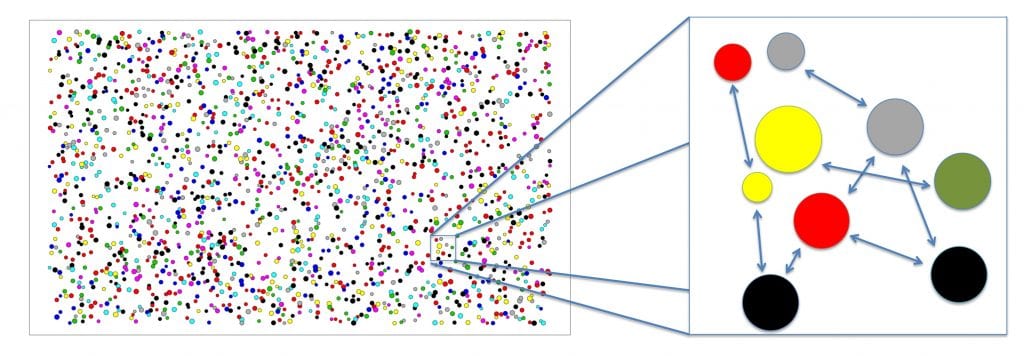Systems biology uses a holistic approach to analyze complex interactions in biological systems. This requires the use of computational and mathematical modeling techniques to study these systems on a spatial and temporal scale. In their review published in BioEssays, Mohammad Soheilypour and Mohammad Mofrad discuss one such molecular systems biology technique termed ‘agent-based modeling’.

Agent-based modeling (ABM) is a bottom-up computational technique for simulating the interactions between multiple independent entities, termed ‘agents’. As such, this technique has already been used in various areas ranging from economics to social science and is nowadays also starting to be employed to model complex phenomena in biology.
In ABM, each agent in the system (e.g. cells or molecules; shown in different sizes and colors in the figure) is associated with a set of characteristics. Additionally, the agents are able to move and interact with one another based on predefined governing rules (symbolized by the arrows). The objective of ABM is to assess the individual effect of each agent on the overall system and to then predict subsequent emergent phenomena. With ABM one is able to analyze thousands of molecules at a time-scale between microseconds and seconds.
In their review, the authors briefly present different agent-based modeling tools, some of which were specifically developed for cellular-scale studies. Furthermore, they discuss the challenges associated with defining the governing rules of how the molecules move and interact with one another in the system. Soheilypour and Mofrad also give some concrete examples of how molecular agent-based modeling has already been applied in biology. One study created a ‘virtual cytoplasm’ of an E. coli cell to look at the effect of molecular crowding on cytoplasmic diffusion and diffusion-limited reactions. Another study analyzed different aspects of mRNA transport from the nucleus to the cytoplasm. Different intracellular signaling pathways were also explored using agent-based models.
With its high spatial resolution in combination with long time scales, agent-based modeling has the potential to become more widely employed in systems biology. However, there is still the need to develop better ABM frameworks that will be able to specifically answer biological questions.

















